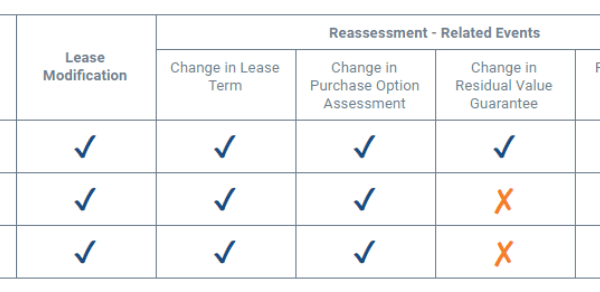This post originally appeared on Marketplace Advertiser, Connected Real Estate Magazine and is republished with permission. Find out how to syndicate your content with theBrokerList.
console.debug(‘TRINITY_WP’, ‘Skip player from rendering’, ‘is single: , is main loop: 1, is main query: 1’);console.debug(‘TRINITY_WP’, ‘trinity_content_filter’);
A recent YardiMatrix report forecasted that retail sales, housing starts and personal income will all keep growing at a rapid pace until the middle of the next decade, GlobeSt reports. If so, demand for industrial space will likely “continue unabated” for a few more years—at least. YardiMatrix’ prediction called for an annual increase in total industrial stock of between 2 and 2.3% during the next five years, which would net between 350 and 370 million square feet of new space annually. More than 290 million square feet of industrial space has been added during the last three years, but the predicted increase in space still might not be big enough to meet demand.
Cause of increased demand for industrial CRE
A rapid rise in online sales, which hit a quarterly record of $222 billion during the second quarter of 2021, helped spur the growth of industrial demand, GlobeSt reports. E-commerce sales during that time frame made up a little more than 13% of all retail sales, per U.S. Census Bureau data. Online sales comprised just 4.2% of retail during the first quarter of 2010 and less than one percent during the first quarter of 2000 by comparison.
E-commerce growth had created demand for high-tech logistic facilities in population hubs that can handle next-day and even same-day shipments, as well as accommodate third-party logistics providers growing commitment to AI and robotics fulfillment mechanisms.
“Since older industrial stock often does not have the technical capacity for such logistics usage, the development of new space is necessary to accommodate the growth of 3PLs,” the YardiMatrix report said.
Yardi pointed to NAIOP data that shows that more than 60% of demand for industrial space is coming from 3PLs. It’s companies like FedEx, UPS and DHL that are servicing e-commerce fulfillment. Meanwhile, retail giant Amazon, which operates hundreds of millions of square feet of CRE space in the US, is projected to occupy eight of the 10 biggest industrial developments in the country.
Online shopping is not the only factor driving up industrial space demand however, GlobeSt reports. Non-e-commerce sales have also increased—they hit a record-high $1.44 trillion during the second quarter of 2021. Manufacturing, car, tires, parts, medical industries, materials/construction and more have also played into this surge. Additionally, the YardiMatrix report noted that smaller local and regional companies are increasing their industrial space occupancy, despite national businesses receiving most of the attention.
“Examples include those that service the booming home improvement and health care supply industries and local contractors,” the report said. “Smaller companies are more likely to occupy multi-tenant buildings. Multi-tenant space accounts for more than 40% of industrial square footage in half of the top 30 metros ranked by amount of industrial stock.”
Industrial CRE outlook
Yardi analysts reviewed housing starts, retail and wholesale inventories, retail sales (besides cars and gas), personal income and weighted import and export volumes to reach their five-year predictions, GlobeSt reports.
Connecting those metrics to demand for industrial space, “is largely a function of how much the sector is sensitive to changes in economic growth and consumer demand, which accounts for about two-thirds of the U.S. economy,” the report said. “Ultimately the demand for physical goods translates into the space required to physically handle and store those goods as they move from the producer to the end user.”
Yardi believes industrial supply growth should remain solid through 2026, despite the current labor and materials shortages that have negatively impacted the construction industry. The firm also predicted that 305 million square feet will be delivered in 2021, 348 million square feet next year and 370 million square feet in 2026.
Dallas, Chicago, Phoenix, the Inland Empire, Houston, Indianapolis, Austin, Philadelphia, Savannah, and Atlanta comprise the top markets with supply under construction on a square footage basis, according to CommercialEdge data. Meanwhile, it’s mainly secondary markets leading the way when it comes to the most industrial space under construction as a percentage of stock. These markets include Savannah, GA, Jackson, MS and Amarillo, TX.
Looking forward, Dallas, Chicago, the Inland Empire and Phoenix make up almost a quarter of all of the industrial supply growth. Cities throughout the southeast and southwest are expected to add industrial stock at a rate of at least 5%.
“As trade and shipping activity grow, many ports—including Long Beach, Los Angeles, Newark and Savannah—are seeing record growth in inbound cargo,” the report said. “That has led to delays in moving cargo, even as activity at some ports moves round-the-clock. The growing competition to rent space has led occupancy rates to steadily rise over the last decade and enabled property owners to boost revenue streams from services such as parking and storage.”
Meanwhile, industrial rents have increased 4% nationally year-over-year through July (6.9% in the Inland Empire), with vacancy reaching a low of 1.4%, according to GlobeSt. Los Angeles, Seattle, Nashville and the Bay Area have seen rent growth at or above 5% while the national vacancy rate is 5.8%, per Commercial Edge data.
The YardiMatrix report closed with the notion that “no slowdown appears to be in sight.”
“In the medium term, the economy will be stimulated by consumer spending and (likely) trillions of dollars of government infrastructure spending,” the report said. “The upshot is that demand for industrial— especially more technologically sophisticated 3PL space—is very likely to remain strong for the foreseeable future.”
Joe Dyton can be reached at [email protected]
The post Analysis: Industrial space demand will continue upward through 2026 appeared first on Connected Real Estate Magazine.



